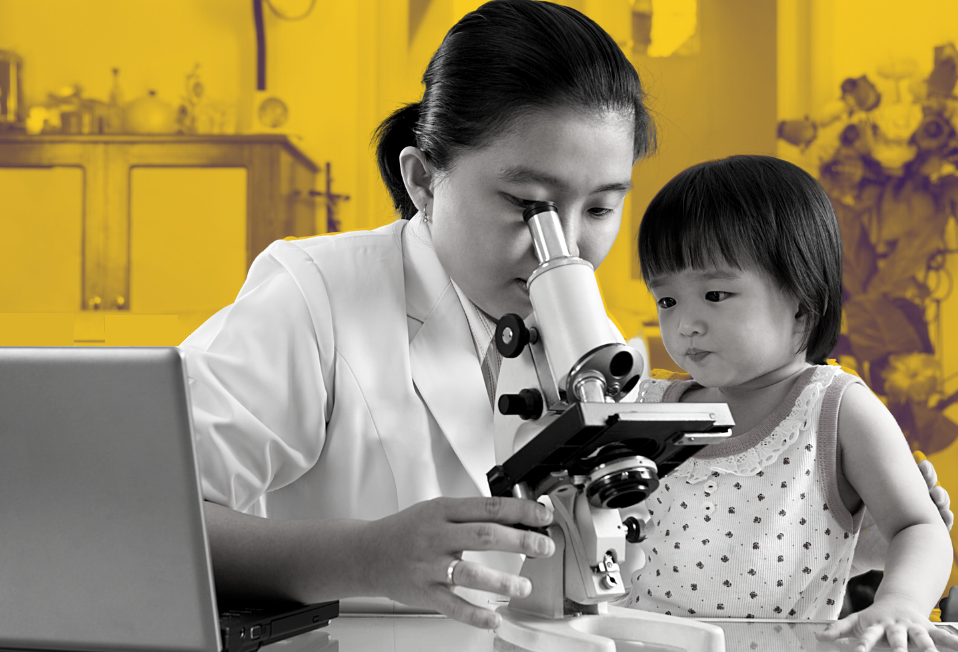Early data suggests women are publishing less during the pandemic

People who are balancing a career, a home, and family responsibilities had a lot to handle, even before the pandemic. While this is true for everyone, studies suggest that in families where there is at least one healthy and able adult woman present, she is the one who handles the majority of the caregiving and housework-related responsibilities.
Before COVID-19 brought the modern world to a screeching halt, data from the U.S. Bureau of Labour Statistics suggested women aged 15 and older spent about 5.7 hours a day doing housework and looking after children and elders, while men in the same age group dedicated about 3.6 hours a day to the same activities.
With schools and daycares closed, legions of parents are working at home and trying to balance childcare at the same time, with zero learning curve and little-to-no support.
It will be some time before we can accurately depict how COVID-19 is affecting our mental health, harming some minority groups, or impacting finances and career prospects, but there are suggestions the new arrangements are disproportionately affecting the careers of female scientists with caregiver responsibilities.
“I’d say that I am really struggling to balance my days,” says ‘B’, a chemistry professor based in the U.S. who asked to speak to We Rep STEM anonymously.
For the past few weeks, B has been at home alongside her twin, 8-year-old boys.
“When classes were still in session, I tried to get us into a routine, that got them actually doing school work in the mornings,” she says.
“That mostly seemed to consist of me shoving packets of papers at them and then them trying to bargain their way out of doing it, while I struggled to get anything done to get the morning going. Most days, I felt like I got about three emails responded to by 11:00 a.m. if I was lucky.”
While B has the support of her “wonderful” husband, “I honestly feel like the childcare mostly comes down to me,” she says.
“Essentially completely during the end of the semester and during the lockdown.”
Outside of parenting, B says she’s feeling “unmotivated.”
“During the semester I felt like I was struggling in all areas of my life,” she says.
“Now, classes are over and the summer, which is usually pretty productive, is feeling just repetitive.”
B’s story appears to be a common one in the age of COVID-19, based on an analysis published by Nature this week.
The article cites several researchers, including Megan Frederickson, an ecologist at the University of Toronto who looked at preprint servers to determine if women have been publishing less since the lockdown began — and the early data suggests they are, across all disciplines.
Even prior to the lockdown, female scientists published fewer papers than men. Over the past 60 years, only about 27 per cent of all STEM-related research papers have been authored by women, according to Northeastern University — but that number has been rising steadily.
In 1955, women authored about 13 per cent of all papers. By 2005, that number had climbed to 35 per cent.
But the pandemic could be erasing these gains, and time will only tell how deep — and long-lasting — the impact will be.
It will be some time before we know if the publication shortage is a blip as we try to adapt to our new normal or indicative of a long-term trend, a caveat Frederickson acknowledges in her paper.
“Peer review takes time, so it is still too soon to see COVID-19’s effects on the numbers of journal articles published by female versus male academics,” she writes.
“However, a growing number of academics make their submitted or in-progress manuscripts available on preprint servers, meaning it might be possible to measure the pandemic’s effect on preprint submissions in real-time.”

For her analysis, Frederickson looked at 73,000 author names on 36,529 preprints in arXiv and bioRxiv, preprint servers that cover a diverse range of STEM fields.
The names were then compared to those in the U.S. Social Security Administration’s baby-name database, which registers the names and genders of children born in the United States.
When examining the number of studies posted between March 15 and April 15 in 2019 and 2020, Frederickson found the number of women who authored preprints grew by 2.7 per cent between 2019 and 2020 — but the number of male authors increased by 6.4 per cent during the same period.
“The number of male corresponding authors is growing faster than the number of female corresponding authors, comparing just before, to during, the pandemic,” reads and excerpt from the study.
“The differences are modest, but they’re there,” Frederickson told Nature.
Frederickson admits the findings are limited.
For starters, some authors may have been mis-gendered due to the data scraping method employed.
“This is a brute force method of predicting gender, and it has many limitations,” she writes.
“By using this method, I am not assuming that individuals are correctly gendered in the resulting dataset, but merely that it provides insight into gender’s effects in aggregate across the population of preprint authors. This approach clearly mis-genders or excludes some individual authors, but it can reveal gender bias in a large enough dataset.”
It would also not be accurate to assume all women are publishing less due to home-bound responsibilities.
In some households, men are the primary caregivers and not all female academics have dependants — but the findings are worthy of further analysis.
Little by little, data is emerging that is helping to paint a picture of how the pandemic is affecting different segments of the population. As the COVID-19 crisis continues, an increasing number of large and small-scale surveys — as well as peer-reviewed research — will come to light, allowing for increasingly accurate analysis.

LIKE WHAT YOU SEE HERE? SUBSCRIBE TO OUR NEWSLETTER AND STAY IN TOUCH.
